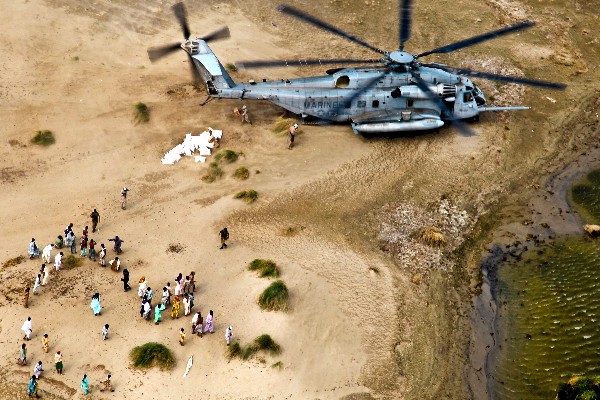
Food (In)Security – Hungry for Change
The single largest impact of global warming could be the unchecked threat to food security. This provides the largest proximate cause to several scenarios for conflict and should thus be avoided. Global warming has the potential to ruin agriculture, create ethnic tensions, and destabilize countries. That could all result in war.
While droughts are one serious consequence of warming, other serious weather patterns can emerge that can harm food security. Some climate models suggest that, in addition to droughts and heat waves, global warming can contribute to floods and increased occurrences of hurricanes. This is because warming will increase the overall temperature of surface waters and also increase evaporation of that surface water. The warmer air is able to hold more water so that when it does end up raining, there is a higher chance of flooding.
Furthermore, rapidly shifting climate conditions would happen too quickly for many plant species to adapt, leading to a loss of biodiversity. This would further harm food security as fewer strains of crops make them more vulnerable to diseases and pests. This will harm agricultural yield especially when they become as intense and unpredictable as the models would suggest.
The increasing number and severity of extreme events will cause fluctuations in crop yields. When this happens, there is a high risk of food shortages that will inevitably drive up food prices. Unfortunately, the areas that would be most sensitive to price increases are areas that are already poor and have chronic malnutrition, such as parts of South Asia and Sub-Saharan Africa
If countries are faced with food shortages, governments may be forced to lash out towards neighbors to access precious resources in order to quell potential riots. These conflicts are particularly problematic in volatile developing regions such as the Middle East and Africa. As a result, the U.S. is likely to be involved in such conflicts to ensure that radical governments do not get into power and undermine U.S. interests in those regions.
To that end, the United States should act aggressively to cut carbon dioxide emissions and see that the rest of the world does as well. It can do so by investing heavily in future alternative energy technologies in order to make them commercially viable. Sources like solar power provide promising alternatives for clean sources of power.
However, alternative energy technologies will take a long time to curb the effects of warming, and the problems of food shortages are immediate short-term concerns. Governments should also take steps to alleviate any problems that may arise from food insecurity by adapting to climate change. In order to deal with prolonged periods of drought, one method of adaptation would be for governments to invest more heavily in water storage technologies. Because heavy rainstorms may be interspersed with long periods of drought (both of which are harmful to crops), a good compromise may be to invest in small-scale water storage sites at places such as natural wetlands, soil, groundwater from ponds, and more. This would go a long way in prolonging and even increasing agricultural productivity. Unlike dams, small scale water storage sites can be tailored to particular regions and local uses that are likelier to offset the impact of water shortages that could harm crop development. These strategies will be sufficient in regions that are prone to water shortages.
To deal with heavy rainstorms or floods requires a more comprehensive approach to risk management and mitigation. While farmers could mitigate the risk by diversifying to include more flood resistant crops, they can also work with governments to mitigate risk by pursuing strategies like investment in flood protection systems and providing emergency assistance to those that suffer severe damage.






[…] wide scale food shortage in one area strains the global food system; shortages in several areas at once could break it. In […]
[…] Food (In)Security – Hungry for Change […]